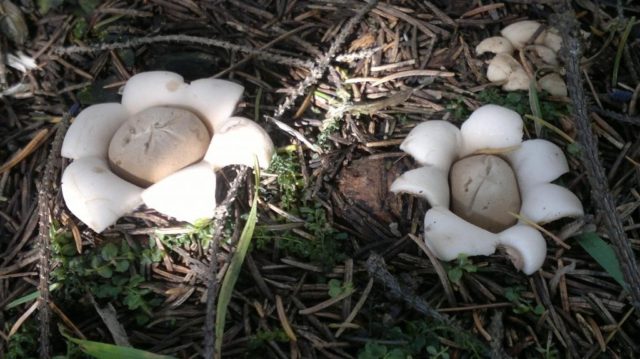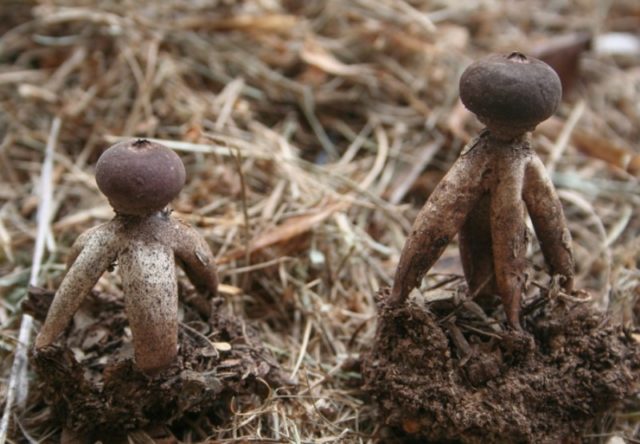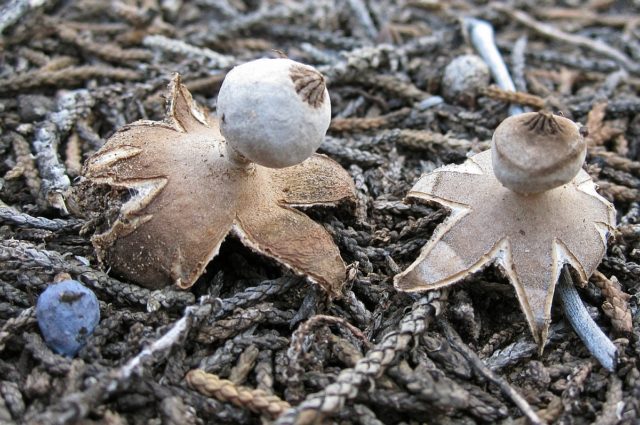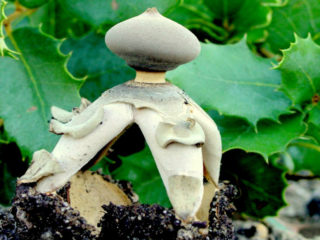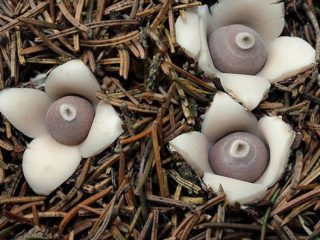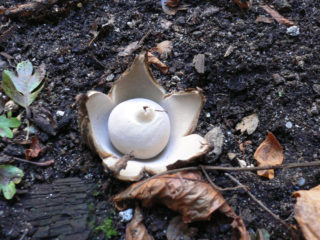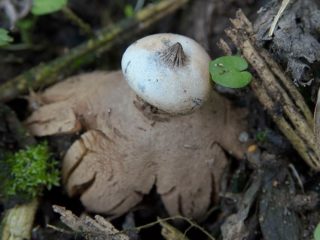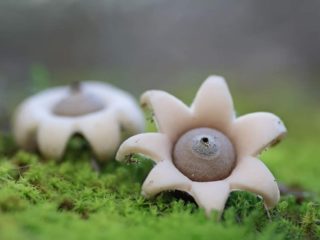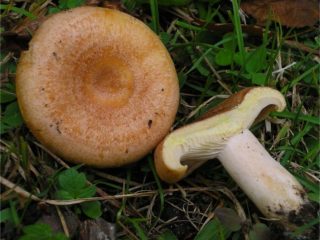Content
Black-headed starwort is a bright, inedible specimen from the Geastraceae family. Grows in deciduous forests in regions with warm climates. The species is rare, so if you find it, it is better not to pick it, but to pass by.
What does the black-headed starfish look like?
Black-headed starwort has an original, unusual fruiting body. A small pear-shaped or spherical mushroom ends with a pointed nose that is whitish or brown in color. In a young specimen, the inner shell fits tightly to the outer one.As it matures, a rupture occurs and the mushroom splits into 4-7 lobes, exposing the internal spore-containing substance (gleba).
The dark coffee pulp is dense and becomes fibrous and loose as it matures. At full maturity, the gleba ruptures and coffee or light olive spores are sprayed into the air, thus forming new mycelium.
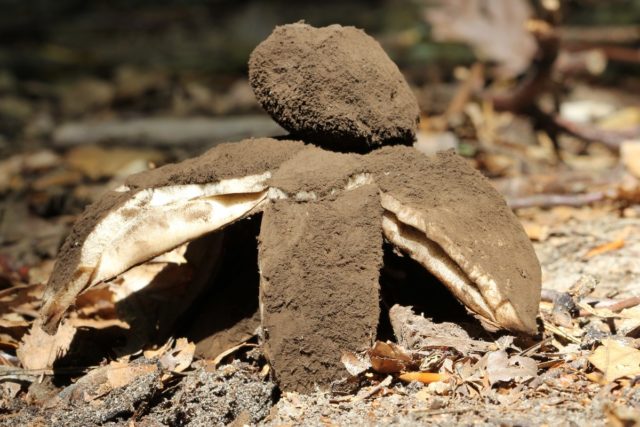
When ripe, the mushroom takes on the shape of a star.
Where and how does it grow
Black-headed starwort is a rare species that grows in regions with a comfortable climate. It can be found in the mountains of the Caucasus, in the deciduous forests of Southern and Central Russia, in parks and squares of the Moscow region. Fruiting occurs from August to the end of September.
Is the mushroom edible or not?
Black-headed starwort is not used in cooking. But thanks to its beautiful, bright shape, it is suitable for a photo shoot. The mushroom has no nutritional value, belongs to the category of inedible species, but has found wide use in folk medicine:
- young species, cut into thin strips, are used instead of a plaster, a hemostatic material, for rapid healing of wounds;
- Healing tinctures are prepared from ripened spores.
Doubles and their differences
The species, like every fruiting body, has similar counterparts:
- Small star – develops underground, as it grows, it appears on the surface and bursts into the shape of a star. The species is common in open areas and can be found in steppes, meadows, and within the city. Prefers to grow in fertile, calcareous soil in small groups or forming a witch's circle.It is not used in cooking due to lack of taste and smell.
An unusual species grows on a coniferous substrate
- WITHvodka - conditionally edible specimen. The fruiting body develops in the depths of the earth, as it matures it appears on the surface and bursts in the form of a star. The surface is brown, the spore-bearing ball is flattened and fawn in color.
Only young specimens are eaten
- Schmiedel's Star - a small mushroom. It originates underground, during the ripening period it appears above the leafy substrate, cracks, exposing the internal spore-bearing layer. Fruiting occurs in autumn; only young specimens are used for food.
A rare species, young mushrooms can be eaten
Conclusion
Black-headed starwort is an inedible representative of the mushroom kingdom. Rarely found, prefers to grow in autumn, among deciduous trees. Because of its original shape, even a novice mushroom picker can recognize it.
